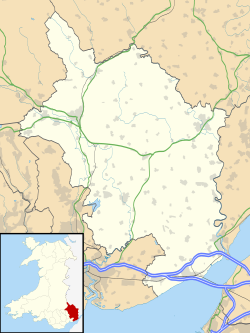| Cross Ash | |
|---|---|
 Old Post Office in Cross Ash | |
Location within Monmouthshire | |
| OS grid reference | SO407197 |
| Principal area | |
| Preserved county | |
| Country | Wales |
| Sovereign state | United Kingdom |
| Post town | ABERGAVENNY |
| Postcode district | NP7 |
| Dialling code | 01873 |
| Police | Gwent |
| Fire | South Wales |
| Ambulance | Welsh |
| UK Parliament | |
Cross Ash is a village in Monmouthshire, south east Wales. It is located on the B4521 road between Abergavenny and Skenfrith, some six miles north east of Abergavenny. The Welsh name for Cross Ash is Croesonnen, although it is not currently in official use.
